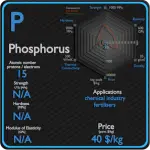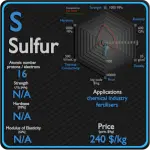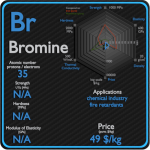This article contains comparison of key thermal and atomic properties of phosphorus and potassium, two comparable chemical elements from the periodic table. It also contains basic descriptions and applications of both elements. Phosphorus vs Potassium.
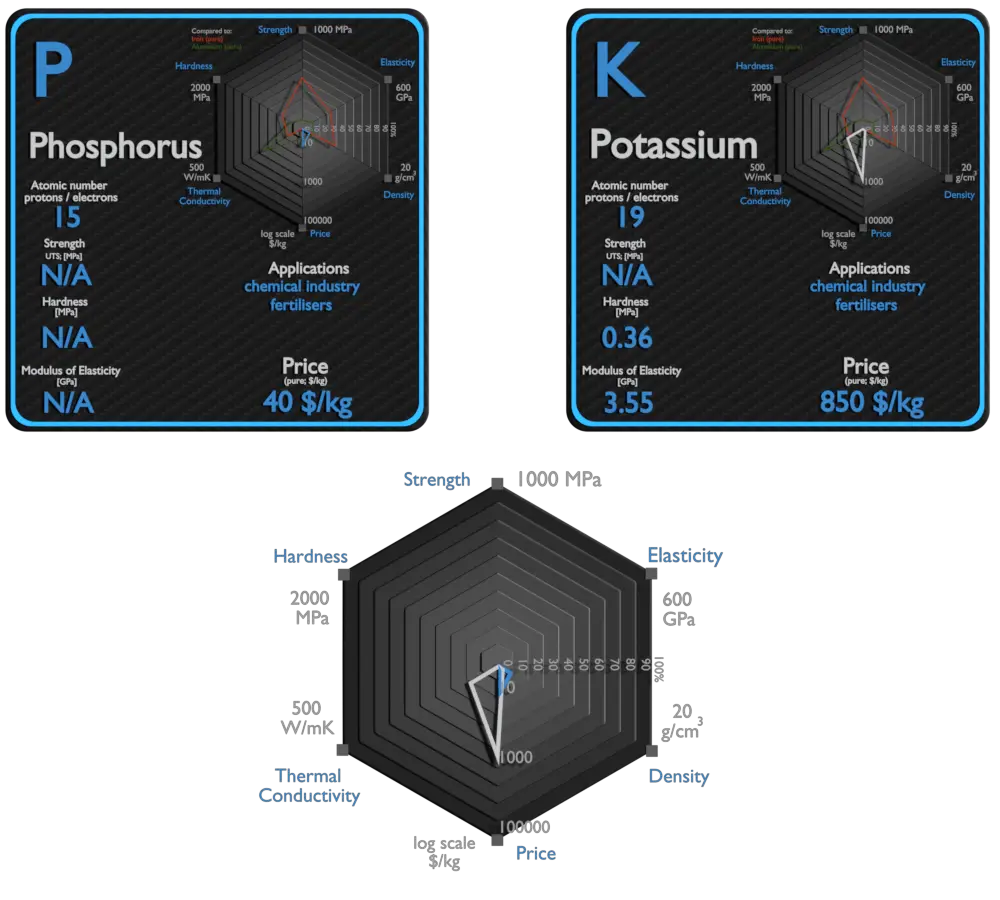
Phosphorus and Potassium – About Elements
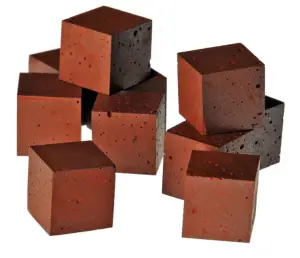
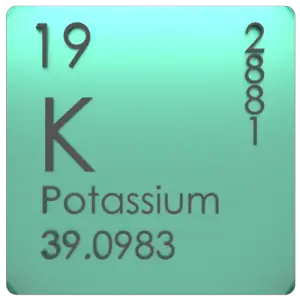
Source: www.luciteria.com
Phosphorus and Potassium – Applications
Phosphorus
Phosphorus is an essential plant nutrient (the most often limiting nutrient, after nitrogen), and the bulk of all phosphorus production is in concentrated phosphoric acids for agriculture fertilisers, containing as much as 70% to 75% P2O5. The vast majority of phosphorus compounds mined are consumed as fertilisers. Phosphate is needed to replace the phosphorus that plants remove from the soil, and its annual demand is rising nearly twice as fast as the growth of the human population. Other applications include organophosphorus compounds in detergents, pesticides, and nerve agents.
Potassium
Potassium (K) is an essential nutrient for plant growth. It’s classified as a macronutrient because plants take up large quantities of K during their life cycle. Agricultural fertilizers consume 95% of global potassium chemical production, and about 90% of this potassium is supplied as KCl. Due to its high degree of reactivity, pure potassium is rarely used in its elemental /metallic form. It is used as a powerful reducing agent in organic chemistry. Potassium/Sodium alloys are It used as a heat exchange medium . The heat in the potassium warms water and makes it hot enough to boil. Then water is changed into steam, which is used to work devices that generate electricity.
Phosphorus and Potassium – Comparison in Table
| Element | Phosphorus | Potassium |
| Density | 1.823 g/cm3 | 0.856 g/cm3 |
| Ultimate Tensile Strength | N/A | N/A |
| Yield Strength | N/A | N/A |
| Young’s Modulus of Elasticity | N/A | 3.53 GPa |
| Mohs Scale | 0.5 | 0.4 |
| Brinell Hardness | N/A | 0.36 MPa |
| Vickers Hardness | N/A | N/A |
| Melting Point | 44.1 °C | 63.25 °C |
| Boiling Point | 280 °C | 760 °C |
| Thermal Conductivity | 0.235 W/mK | 102.4 W/mK |
| Thermal Expansion Coefficient | N/A | 83 µm/mK |
| Specific Heat | 0.77 J/g K | 0.75 J/g K |
| Heat of Fusion | 0.657 kJ/mol | 2.334 kJ/mol |
| Heat of Vaporization | 51.9 kJ/mol | 79.87 kJ/mol |








